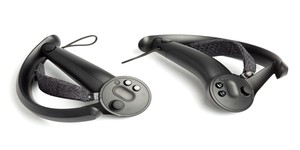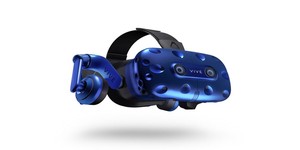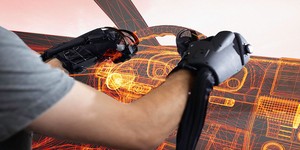Valve has released official details of its SteamVR Tracking 2.0 technology, and it's bad news for owners of HTC Vive virtual reality headsets: The new base-stations won't be backwards compatible with existing devices.
Teased by the company earlier this year and now officially unveiled as part of a developer update, SteamVR Tracking 2.0 is designed to replace the current Lighthouse system of positional tracking employed by the SteamVR-compatible HTC Vive virtual reality headset. The next-generation release, Valve has promised, comes with a wealth of improvements including support for more than two base stations to improve whole-room positional tracking, improved performance with a reduction in the number of moving parts, and smaller, quieter, lower-power, more reliable, and less expensive base-station hardware.
In short, it's a major upgrade - but one which leaves existing owners out in the cold. 'Because the new Valve-built base stations don’t include a sync blinker, one side-effect of the sync-on-beam technology in tracking 2.0 is that those base stations will only work with TS4231-based devices,' explained Valve's Joe Ludwig in the announcement, referring to the Triad Semiconductor second-generation laser tracking application specific integrated circuit (ASIC) around which future SteamVR headsets will be built. 'Valve-built base stations will not work with older 1.0 devices. The older 1.0 base stations will continue to work with new devices, just without any of the new features.'
Ludwig did not share an official release date for the new base-stations nor the TS4231-based headsets, which will replace HTC's existing discrete hardware solution and first-generation TS3633 ASIC Valve had previously provided to hardware developers, beyond promising 'production quantities' of base-stations in November this year and engineering samples some time this month.
Teased by the company earlier this year and now officially unveiled as part of a developer update, SteamVR Tracking 2.0 is designed to replace the current Lighthouse system of positional tracking employed by the SteamVR-compatible HTC Vive virtual reality headset. The next-generation release, Valve has promised, comes with a wealth of improvements including support for more than two base stations to improve whole-room positional tracking, improved performance with a reduction in the number of moving parts, and smaller, quieter, lower-power, more reliable, and less expensive base-station hardware.
In short, it's a major upgrade - but one which leaves existing owners out in the cold. 'Because the new Valve-built base stations don’t include a sync blinker, one side-effect of the sync-on-beam technology in tracking 2.0 is that those base stations will only work with TS4231-based devices,' explained Valve's Joe Ludwig in the announcement, referring to the Triad Semiconductor second-generation laser tracking application specific integrated circuit (ASIC) around which future SteamVR headsets will be built. 'Valve-built base stations will not work with older 1.0 devices. The older 1.0 base stations will continue to work with new devices, just without any of the new features.'
Ludwig did not share an official release date for the new base-stations nor the TS4231-based headsets, which will replace HTC's existing discrete hardware solution and first-generation TS3633 ASIC Valve had previously provided to hardware developers, beyond promising 'production quantities' of base-stations in November this year and engineering samples some time this month.

MSI MPG Velox 100R Chassis Review
October 14 2021 | 15:04








Want to comment? Please log in.